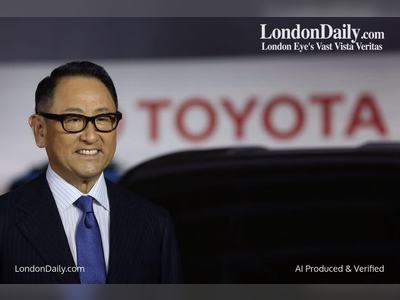Carney Secures Liberal Mandate in Canada’s Federal Election
Canada’s Liberal Party has won a fourth consecutive mandate following the federal election, with Mark Carney securing his position as prime minister.
The results mark an unexpected political comeback for the Liberals, who changed leadership just two months before the election.
Victory Confirmed
National media outlets declared a Liberal victory shortly after polls closed across Canada at 22:00 EDT (03:00 BST). While the final seat count remains incomplete, initial results indicate the Liberals are on course to form the government. It is not yet confirmed whether the party will secure the 172 seats required for a parliamentary majority. Several close races remain undecided as ballot counting continues under Canada's election laws, which require hand-counting in the presence of witnesses.
Mark Carney, who replaced Justin Trudeau as Liberal leader and prime minister last month, will remain in office without a new swearing-in ceremony. Cabinet ministers also retain their positions unless Carney opts for a reshuffle, in which case a formal ceremony with the governor general will take place. A leaner Cabinet structure was introduced when Carney took office, and changes may follow as Parliament reconvenes.
Legislative Outlook
If the Liberals do not secure a majority, they are expected to form a minority government, negotiating support from other parties to pass legislation and survive no-confidence votes. The Bloc Québécois and the New Democratic Party (NDP) are seen as potential partners in this arrangement. The Conservative Party is projected to remain the Official Opposition.
When Parliament resumes, a Speech from the Throne will outline the government's legislative agenda. The Liberals are anticipated to introduce policies aimed at strengthening Canada's economy, including measures to address trade tensions with the United States. A tax cut for low- and middle-income Canadians, and a streamlined approval process for key energy and mining projects, are among the expected legislative priorities. The government has also committed C$5 billion to a trade diversification fund and expressed ambitions to position Canada as a leader in both clean and conventional energy sectors.
Canada-U.S. Relations
Carney has emphasized the importance of redefining Canada’s relationship with the United States, particularly in light of new U.S. tariff policies. He and U.S. President Donald Trump held preliminary talks in late March and agreed to begin formal negotiations on a revised economic and security framework following the election.
International Agenda
The new administration will also focus on preparations for the upcoming G7 summit, which Canada is scheduled to host in June in Alberta. The summit will be a key moment for Carney to outline his government's international priorities.
Conservative Party Results
The Conservative Party, led by Pierre Poilievre, increased its share of the national vote to approximately 41%, marking its strongest performance in decades. The party is projected to have won 144 seats, up from 120 before the election. Despite this gain, it fell short of forming the government.
Poilievre, however, is projected to have lost his own seat in Ontario. Internal party discussions are expected to follow as Conservatives assess their future leadership. The party has undergone multiple leadership changes since the Liberals’ sweep in 2015 and faces ongoing challenges in reversing electoral setbacks.










